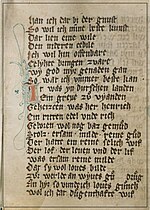Duchy of Luxembourg

The Duchy of Luxembourg (Dutch: Luxemburg; French: Luxembourg; German: Luxemburg; Luxembourgish: Lëtzebuerg) was a state of the Holy Roman Empire, the ancestral homeland of the noble House of Luxembourg. The House of Luxembourg became one of the most important political forces in the 14th century, competing against the House of Habsburg for supremacy in Central Europe. They would be the heirs to the Přemyslid dynasty in the Kingdom of Bohemia, succeeding the Kingdom of Hungary and contributing four Holy Roman Emperors until their own line of male heirs came to an end and the House of Habsburg received the territories that the two Houses had originally agreed upon in the Treaty of Brünn in 1364. In 1443, the duchy passed to Duke Philip the Good of Burgundy of the French House of Valois, and, in 1477, by marriage to Archduke Maximilian I of Austria of the House of Habsburg. The Seventeen Provinces of the former Burgundian Netherlands were formed into an integral union by Holy Roman Emperor Charles V in the Pragmatic Sanction of 1549. In 1795, French revolutionaries ended this situation.
Excerpt from the Wikipedia article Duchy of Luxembourg (License: CC BY-SA 3.0, Authors, Images).Duchy of Luxembourg
Rue Saint-Mathieu, Luxembourg Pfaffenthal
Geographical coordinates (GPS) Address Nearby Places Show on map
Geographical coordinates (GPS)
| Latitude | Longitude |
|---|---|
| N 49.61 ° | E 6.13 ° |
Address
Unesco buffer zone
Rue Saint-Mathieu
2138 Luxembourg, Pfaffenthal
Luxembourg
Open on Google Maps









